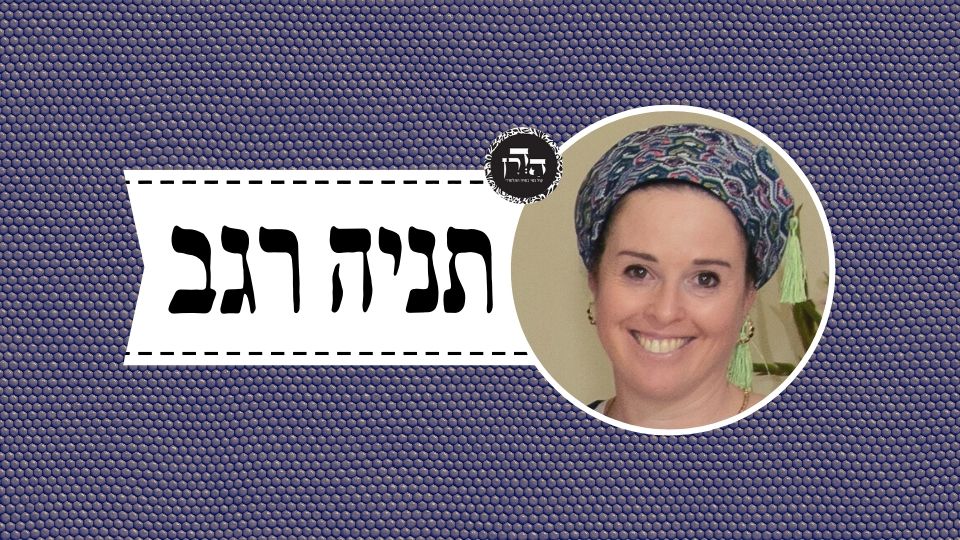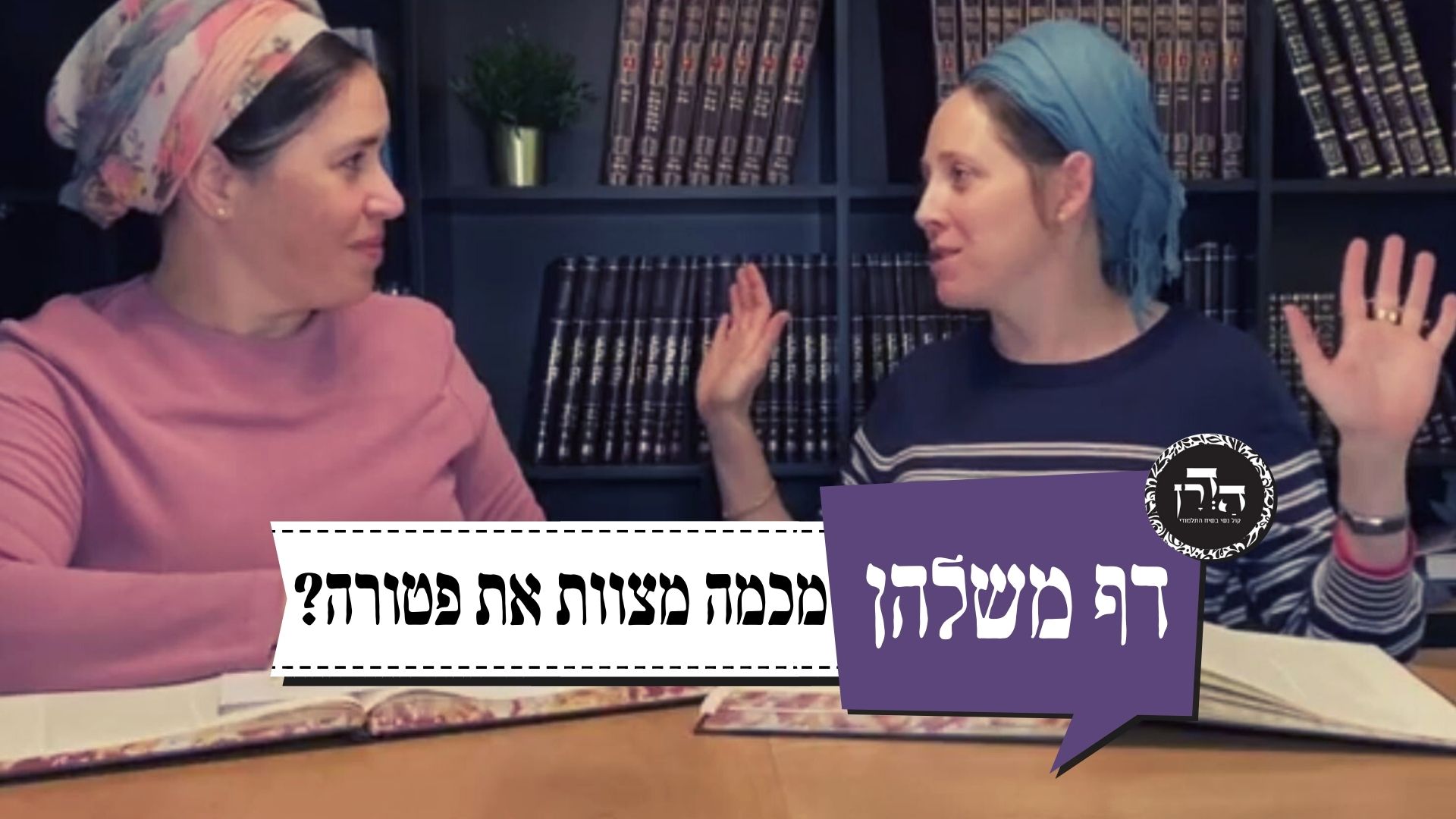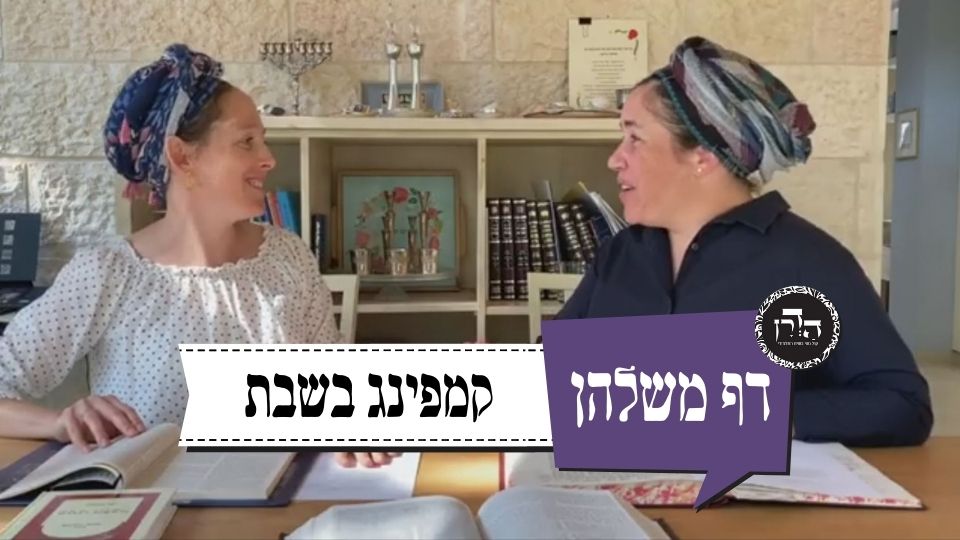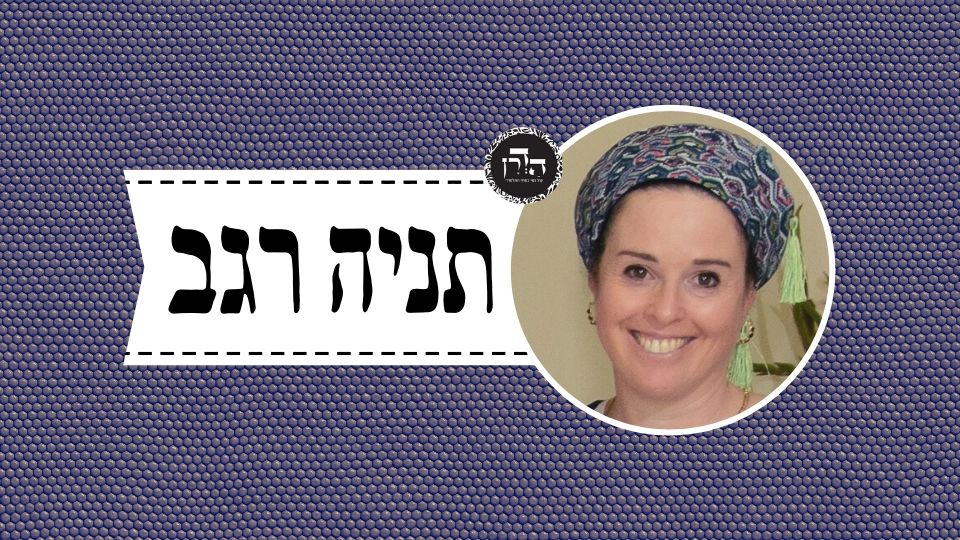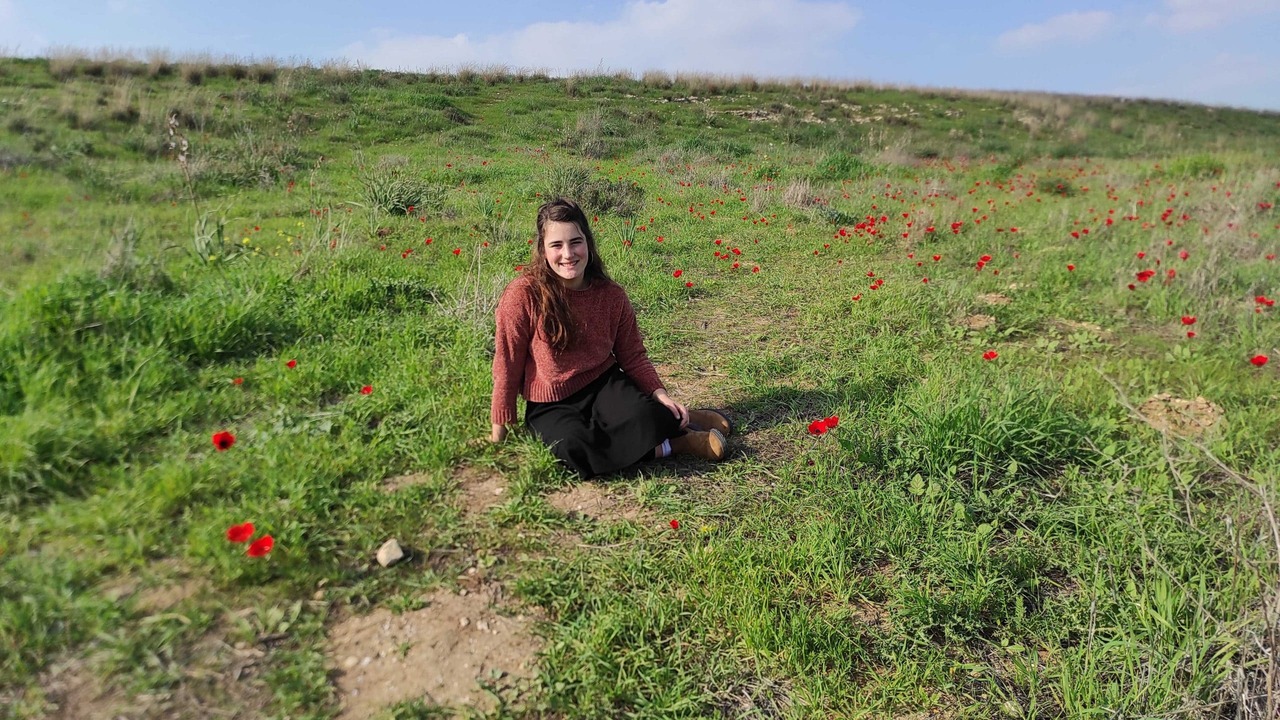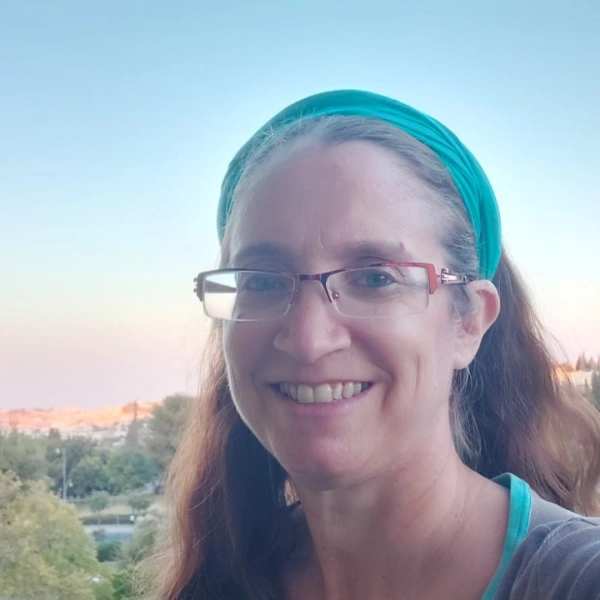עירובין ה
וּמַאן דְּאָמַר אַרְבָּעָה, קָסָבַר: אָסוּר לְהִשְׁתַּמֵּשׁ תַּחַת הַקּוֹרָה!
And the one who said four handbreadths holds that the alleyway is considered as if it were sealed from the inside edge of the cross beam, and consequently it is prohibited to utilize the area beneath the cross beam. As the area beneath the cross beam is not part of the alleyway, a significant demarcation, i.e., one of four handbreadths, is required within the alleyway itself.
לָא, דְּכוּלֵּי עָלְמָא קָסָבְרִי מוּתָּר לְהִשְׁתַּמֵּשׁ תַּחַת הַקּוֹרָה, וּבְהָא קָא מִיפַּלְגִי: מָר סָבַר קוֹרָה מִשּׁוּם הֶיכֵּר, וּמָר סָבַר קוֹרָה מִשּׁוּם מְחִיצָה.
The Gemara rejects this explanation: No, everyone agrees that it is permitted to utilize the area beneath the cross beam, and they disagree with regard to this: This Master, Rav Yosef, holds that a cross beam functions in an alleyway as a conspicuous marker that demarcates the alleyway from the public domain, and consequently a mere handbreadth is sufficient, as even a handbreadth is sufficiently conspicuous. And this Master, Abaye, holds that a cross beam serves as a partition, and a partition is not effective for an area of less than four handbreadths. The principle that an outer edge descends and seals the alleyway does not apply if the beam is higher than twenty cubits. In order for it to be considered a partition, there must be at least four handbreadths that are less than twenty cubits beneath the cross beam.
וְאִיבָּעֵית אֵימָא, דְּכוּלֵּי עָלְמָא קוֹרָה מִשּׁוּם הֶיכֵּר, וְהָכָא — בְּהֶיכֵּר שֶׁל מַטָּה וּבְהֶיכֵּר שֶׁל מַעְלָה קָא מִיפַּלְגִי, דְּמָר סָבַר אָמְרִינַן הֶיכֵּר שֶׁל מַטָּה כְּהֶיכֵּר שֶׁל מַעְלָה, וּמָר סָבַר לָא אָמְרִינַן הֶיכֵּר שֶׁל מַטָּה כְּהֶיכֵּר שֶׁל מַעְלָה.
The Gemara proposes an alternative explanation: And if you wish, say instead that everyone agrees that a cross beam serves as a conspicuous marker, and here they disagree with regard to the relationship between a conspicuous marker below, i.e., the raised area of the alleyway, and a conspicuous marker above, i.e., the cross beam. This Master, Rav Yosef, holds that we say that the halakha that governs the conspicuous marker below is like the halakha that applies to the conspicuous marker above, and one handbreadth suffices. And this Master, Abaye, holds that we do not say that the halakha that governs the conspicuous marker below is like the halakha that applies to the conspicuous marker above. The lower sign must be more prominent and extend four handbreadths.
וְאִיבָּעֵית אֵימָא: דְּכוּלֵּי עָלְמָא אָמְרִינַן: הֶיכֵּר שֶׁל מַטָּה כְּהֶיכֵּר שֶׁל מַעְלָה, וְהָכָא בִּגְזֵירָה שֶׁמָּא יִפְחוֹת קָמִיפַּלְגִי.
The Gemara proposes yet another explanation of the amoraic dispute: And if you wish, say instead that everyone agrees that we say that fundamentally, the halakha that governs the conspicuous marker below is like the halakha that applies to the conspicuous marker above, and even a handbreadth should suffice. But here they disagree whether the Sages decreed that four handbreadths are necessary, lest people treading upon it will erode and diminish the raised area. Rav Yosef is not concerned that it will be diminished and therefore holds that a raised area of a handbreadth is sufficient, whereas Abaye is concerned that the raised area of a handbreadth will erode to less than a handbreadth, rendering it inconspicuous, and the alleyway will come to be utilized in a prohibited manner.
הָיָה פָּחוֹת מֵעֲשָׂרָה טְפָחִים וְחָקַק בּוֹ לְהַשְׁלִימוֹ לַעֲשָׂרָה, כַּמָּה חוֹקֵק? כַּמָּה חוֹקֵק?! כַּמָּה דִּצְרִיךְ לֵיהּ! אֶלָּא מִשְׁכּוֹ בְּכַמָּה? רַב יוֹסֵף אָמַר: בְּאַרְבָּעָה, אַבָּיֵי אָמַר: בְּאַרְבַּע אַמּוֹת.
The Gemara considers a new case: If the cross beam spanning the entrance to an alleyway was less than ten handbreadths above the ground, and one hollowed out the ground under the cross beam in order to complete the distance from the ground to the cross beam to ten, how much must he hollow out? The Gemara is surprised by the question: How much must he hollow out? However much is necessary for it to increase the height to at least ten handbreadths. Rather, the question is as follows: How far must the hollowed-out area extend into the alleyway in order to render it permitted to carry throughout the alleyway? Rav Yosef said: Four handbreadths. Abaye said: Four cubits.
לֵימָא בִּדְרַבִּי אַמֵּי וְרַבִּי אַסִּי קָמִיפַּלְגִי, דְּאִיתְּמַר: מָבוֹי שֶׁנִּפְרַץ מִצִּידּוֹ כְּלַפֵּי רֹאשׁוֹ, אִיתְּמַר מִשְּׁמֵיהּ דְּרַבִּי אַמֵּי וְרַבִּי אַסִּי: אִם יֵשׁ שָׁם פַּס אַרְבָּעָה — מַתִּיר בְּפִירְצָה עַד עֶשֶׂר.
The Gemara suggests: Let us say that these amora’im disagree with regard to the ruling of Rabbi Ami and Rabbi Asi. As it was stated with regard to the following question: If the side wall of an alleyway was breached toward its entrance, i.e., close to where the alleyway opens into the public domain, what is the halakha? It was stated in the name of Rabbi Ami and Rabbi Asi: If an upright board four handbreadths wide remains of the original wall or is set up where the original wall had ended, the cross beam or side post at the entrance to the alleyway renders it permitted to carry in the alleyway even if there is a breach of up to ten cubits wide.
וְאִם לָאו, פָּחוֹת מִשְּׁלֹשָׁה מַתִּיר. שְׁלֹשָׁה אֵינוֹ מַתִּיר. לְרַב יוֹסֵף אִית לֵיהּ דְּרַבִּי אַמֵּי, לְאַבָּיֵי לֵית לֵיהּ דְּרַבִּי אַמֵּי.
And if there is no upright board there, the following distinction applies: If the breach is less than three handbreadths, the cross beam or side post renders it permitted to carry in the alleyway, based on the principle of lavud. If the breach is three or more handbreadths, the cross beam or side post does not render it permitted to carry. The Gemara proposes that Rav Yosef, who says that the hollowed-out area need only extend four handbreadths, adopts the opinion of Rabbi Ami, whereas Abaye, who requires a hollowed-out area of four cubits, does not adopt the opinion of Rabbi Ami.
אָמַר לָךְ אַבָּיֵי: הָתָם סוֹף מָבוֹי, הָכָא תְּחִלַּת מָבוֹי. אִי אִיכָּא אַרְבַּע אַמּוֹת — אִין, אִי לָא — לָא.
The Gemara rejects this argument: Abaye could have said to you that the two cases are not comparable: There, in Rav Ami’s case, we are dealing with the final stage of an alleyway, i.e., an alleyway that had at first been properly structured, and only later did it become breached. Here, we are dealing with the initial stage of an alleyway, i.e., an alleyway that from the very outset did not fulfill the necessary conditions. In this case: If there are four cubits in the hollowed-out area, yes, it is considered an alleyway, and if not, no, it is not considered an alleyway.
אָמַר אַבָּיֵי: מְנָא אָמֵינָא לַהּ — דְּתַנְיָא: אֵין מָבוֹי נִיתָּר בְּלֶחִי וְקוֹרָה עַד שֶׁיְּהוּ בָּתִּים וַחֲצֵרוֹת פְּתוּחִין לְתוֹכוֹ.
Abaye said: From where do I say that a length of at least four cubits is required? As it was taught in a baraita: An alleyway is permitted by means of a side post or cross beam only if it has both houses opening into courtyards and courtyards opening into it, as only in that case can it be called an alleyway.
וְאִי בְּאַרְבָּעָה הֵיכִי מַשְׁכַּחַתְּ לֵיהּ!
And if the entire length of the alleyway is only four handbreadths, as is indicated by Rav Yosef’s opinion, how can you find this case? Under what circumstances is it possible for such a short alleyway to have courtyards opening into it? Even if there are only two such courtyards, the entrance to each is at least four handbreadths wide.
וְכִי תֵּימָא דְּפָתַח לֵהּ בְּדוֹפֶן הָאֶמְצָעִי, וְהָאָמַר רַב נַחְמָן: נְקִיטִינַן, אֵיזֶהוּ מָבוֹי שֶׁנִּיתָּר בְּלֶחִי וְקוֹרָה כֹּל שֶׁאׇרְכּוֹ יָתֵר עַל רׇחְבּוֹ, וּבָתִּים וַחֲצֵרוֹת פְּתוּחִין לְתוֹכוֹ.
And if you say that the alleyway opens into the courtyards through its middle wall, i.e., the alleyway is only four handbreadths long but is wide enough to have two entrances opening into two courtyards, this is difficult. Didn’t Rav Naḥman say that we hold on the authority of tradition: Which is an alleyway that is permitted by a side post or a cross beam? Any alleyway whose length is greater than its width and has houses and courtyards opening into it. Accordingly, if the alleyway is only four handbreadths long, its width must be even less than that. Consequently, argues Abaye, a length of at least four cubits is required.
וְרַב יוֹסֵף: דְּפָתַח לֵיה בְּקֶרֶן זָוִית.
And Rav Yosef, how would he respond to this? Rav Yosef explains that the baraita is dealing with a case where the courtyards open into the alleyway at its corners. In this way it is possible to have two openings, each of which is at least four handbreadths wide, although the length of the alleyway itself is no greater than four handbreadths, as the four handbreadths of the openings to the courtyards are divided between the width and the length of the alleyway.
אָמַר אַבָּיֵי: מְנָא אָמֵינָא לַהּ — דְּאָמַר רָמֵי בַּר חָמָא אָמַר רַב הוּנָא: לֶחִי הַבּוֹלֵט מִדּוֹפְנוֹ שֶׁל מָבוֹי, פָּחוֹת מֵאַרְבַּע אַמּוֹת — נִידּוֹן מִשּׁוּם לֶחִי, וְאֵינוֹ צָרִיךְ לֶחִי אַחֵר לְהַתִּירוֹ. אַרְבַּע אַמּוֹת — נִידּוֹן מִשּׁוּם מָבוֹי וְצָרִיךְ לֶחִי אַחֵר לְהַתִּירוֹ.
Abaye further said: From where do I say that a length of at least four cubits is required? As Rami bar Ḥama said that Rav Huna said: With regard to a side post that protrudes from the wall on the side of an alleyway into the opening of the alleyway, if its protrusion was less than four cubits, it is deemed a side post that renders it permitted to carry in the alleyway, and no other side post is required to render it permitted to carry in it. However, if it protruded four cubits, that section is deemed an alleyway, as though there were an additional alleyway within an alleyway, and another side post is required to render it permitted to carry there. This shows that anything less than four cubits does not have the status of an alleyway, which supports the position of Abaye.
וְרַב יוֹסֵף? לְאַפּוֹקֵי מִתּוֹרַת לֶחִי עַד דְּאִיכָּא אַרְבַּע אַמּוֹת. לְמִיהְוֵי מָבוֹי אֲפִילּוּ בְּאַרְבָּעָה טְפָחִים נָמֵי הָוֵי מָבוֹי.
The Gemara asks: And Rav Yosef, how would he respond to this? Rav Yosef distinguishes between the cases: With regard to removing its status as a side post, this status remains until there are four cubits in the length of the side post. However, in order to be deemed an independent alleyway, even with a wall of four handbreadths it is also considered an alleyway.
גּוּפָא. אָמַר רָמֵי בַּר חָמָא אָמַר רַב הוּנָא: לֶחִי הַבּוֹלֵט מִדׇּפְנוֹ שֶׁל מָבוֹי
The Gemara examines Rami bar Ḥama’s statement cited in the course of the previous discussion. As to the matter itself: Rami bar Ḥama said that Rav Huna said: With regard to a side post that protrudes from the wall on the side of an alleyway into the entrance of the alleyway,
פָּחוֹת מֵאַרְבַּע אַמּוֹת — נִידּוֹן מִשּׁוּם לֶחִי, וְאֵין צָרִיךְ לֶחִי אַחֵר לְהַתִּירוֹ. אַרְבַּע אַמּוֹת — נִידּוֹן מִשּׁוּם מָבוֹי, וְצָרִיךְ לֶחִי אַחֵר לְהַתִּירוֹ.
if its protrusion is less than four cubits, it is deemed a side post that renders it permitted to carry in the alleyway, and no other side post is required to render it permitted. However, if it protrudes four cubits, that section is deemed an alleyway, and another side post is required to render it permitted to carry in it.
אוֹתוֹ לֶחִי, הֵיכָן מַעֲמִידוֹ? אִי דְּמוֹקֵי לֵיהּ בַּהֲדֵיהּ, אוֹסֹפֵי הוּא דְּקָא מוֹסִיף עֲלֵיהּ.
The Gemara poses a question: That side post, which is added in order to permit carrying within the alleyway that was formed by the four-cubit side post, where does one position it such that one may carry within the alleyway? The Gemara clarifies its difficulty: If one positions it alongside the first side post as an addition to it, it looks as if he is merely extending the original side post, and it is not noticeable that an extra side post is present.
אָמַר רַב פָּפָּא: דְּמוֹקֵי לֵיהּ לְאִידַּךְ גִּיסָא. רַב הוּנָא בְּרֵיהּ דְּרַב יְהוֹשֻׁעַ אָמַר: אֲפִילּוּ תֵּימָא דְּמוֹקֵי לֵהּ בַּהֲדֵיהּ דִּמְטַפֵּי בֵּיהּ, אוֹ דִּמְבַצַּר בֵּיהּ.
Rav Pappa said: He should position it, the extra side post, on the other side of the alleyway, near the opposite wall. Rav Huna, son of Rav Yehoshua, said: Even if you say that he positions it alongside the first side post, it is valid, so long as he adds to it or diminishes from it in thickness or height, so that it will be noticeable that it is a side post of its own.
אָמַר רַב הוּנָא בְּרֵיהּ דְּרַב יְהוֹשֻׁעַ: לָא אֲמַרַן, אֶלָּא בְּמָבוֹי שְׁמוֹנָה. אֲבָל בְּמָבוֹי שִׁבְעָה — נִיתָּר בְּעוֹמֵד מְרוּבֶּה עַל הַפָּרוּץ.
The Gemara limits the application of Rami bar Ḥama’s ruling: Rav Huna, son of Rav Yehoshua, said: We stated this halakha with regard to a side post protruding four cubits into the alleyway only in the case of an alleyway that is at least eight cubits wide. However, in the case of an alleyway that is only seven cubits wide, it is permitted to carry within the alleyway without an additional side post, not because the original side post functions as a side post but rather because it sufficiently seals off the entrance to the alleyway such that the standing segment is greater than the breached segment. The alleyway is now closed off from all four sides, and the remaining opening to the public domain is regarded as an entrance, as most of that side is closed and only a small part of it is open.
וְקַל וָחוֹמֶר מֵחָצֵר: וּמָה חָצֵר שֶׁאֵינָהּ נִיתֶּרֶת בְּלֶחִי וְקוֹרָה — נִיתֶּרֶת בְּעוֹמֵד מְרוּבֶּה עַל הַפָּרוּץ, מָבוֹי שֶׁנִּיתָּר בְּלֶחִי וְקוֹרָה — אֵינוֹ דִּין שֶׁנִּיתָּר בְּעוֹמֵד מְרוּבֶּה עַל הַפָּרוּץ?
And this is derived by means of an a fortiori inference from a courtyard: Just as in a courtyard, which is not rendered a permitted domain by means of a side post or a cross beam, but actual partitions are required, it is nevertheless rendered a permitted domain even if there are gaps in the partitions, as long as the standing segment is greater than the breached segment in an alleyway, with regard to which the Sages were lenient, as it is rendered a permitted domain by means of a side post or a cross beam, is it not right that it is rendered a permitted domain when the standing segment of the partition is greater than the breached segment?
מָה לֶחָצֵר שֶׁכֵּן פִּרְצָתָהּ בְּעֶשֶׂר, תֹּאמַר בְּמָבוֹי שֶׁפִּרְצָתוֹ בְּאַרְבַּע!
The Gemara refutes this a fortiori inference that was based on the fact that the legal status of a courtyard is more lenient than that of an alleyway, as it is in fact more stringent than that of an alleyway in at least one respect. With regard to what is true of a courtyard, that as long as its breach is less than ten cubits it remains a permitted domain, can you say the same of an alleyway, which is more stringent, as in a case where its breach is only four handbreadths it is not permitted to carry in the alleyway? Therefore, the halakha of an alleyway cannot be derived from the halakha of a courtyard.
קָסָבַר רַב הוּנָא בְּרֵיהּ דְּרַב יְהוֹשֻׁעַ: מָבוֹי נָמֵי, פִּרְצָתוֹ בְּעֶשֶׂר. לְמַאן קָאָמְרִינַן? לְרַב הוּנָא, וְהָא רַב הוּנָא פִּרְצָתוֹ בְּאַרְבַּע סְבִירָא לֵיהּ?!
The Gemara answers: Rav Huna, son of Rav Yehoshua, holds that the breach of an alleyway is also ten cubits. The Gemara raises a difficulty: But in accordance with whose opinion did we state this a fortiori inference? It is in accordance with the opinion of Rav Huna. But doesn’t Rav Huna himself hold that the breach of an alleyway is four handbreadths.
רַב הוּנָא בְּרֵיהּ דְּרַב יְהוֹשֻׁעַ טַעְמָא דְנַפְשֵׁיהּ קָאָמַר.
The Gemara answers: Rav Huna, son of Rav Yehoshua, did not come to explain Rav Huna’s position. Rather, he stated his own view, and he does not accept Rav Huna’s opinion with regard to the law of a breach in an alleyway.
רַב אָשֵׁי אָמַר: אֲפִילּוּ תֵּימָא בְּמָבוֹי שְׁמוֹנֶה נָמֵי לָא צְרִיךְ לֶחִי, מָה נַפְשָׁךְ: אִי עוֹמֵד נְפִישׁ נִיתָּר בְּעוֹמֵד מְרוּבֶּה עַל הַפָּרוּץ, וְאִי פָּרוּץ נְפִישׁ נִידּוֹן מִשּׁוּם לֶחִי.
Rav Ashi went further than Rav Huna, son of Rav Yehoshua, and said: Even if you say that the law with regard to a side post protruding four cubits into the alleyway applies in the case of an alleyway that is exactly eight cubits wide, in that it too does not require an additional side post. Whichever way you look at it, you are forced to arrive at this conclusion: If you say that the standing segment is greater, then the alleyway is permitted, because its standing segment is greater than the breached segment; and if you say that the breached segment is greater, then the protrusion is deemed a side post, as its width must be less than four cubits.
מַאי אָמְרַתְּ, דְּשָׁווּ תַּרְוַיְיהוּ כִּי הֲדָדֵי — הָוֵה לֵיהּ סְפֵק דִּבְרֵיהֶן, וּסְפֵק דִּבְרֵיהֶן לְהָקֵל.
What might you say that would require an additional side post? Would you suggest that there is yet another possibility, that the two are exactly equal, the standing portion and the breach? This is an uncertainty with regard to rabbinic law, as carrying in an alleyway is forbidden only by rabbinic law, and the principle is that where there is an uncertainty with regard to a rabbinic law, one may assume the lenient position, as opposed to an uncertainty arising with respect to a Torah law, where one assumes the stringent position.
אָמַר רַב חָנִין בַּר רָבָא אָמַר רַב: מָבוֹי שֶׁנִּפְרַץ
The Gemara considers a new case: Rav Ḥanin bar Rava said that Rav said: With regard to an alleyway that was breached,








